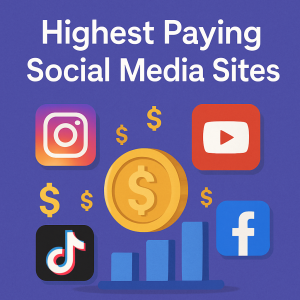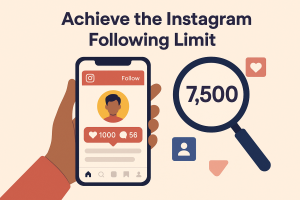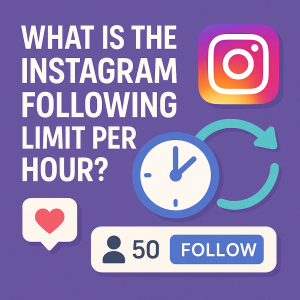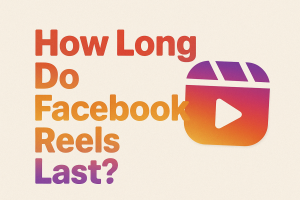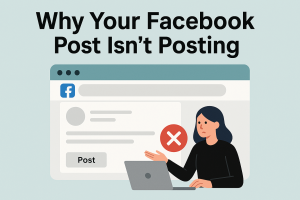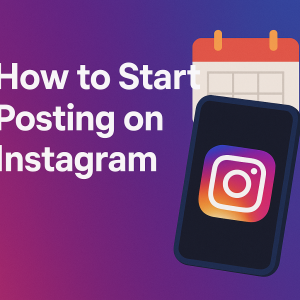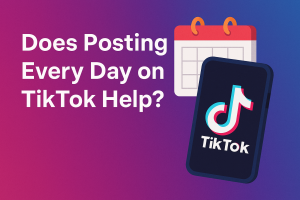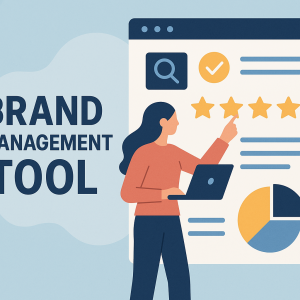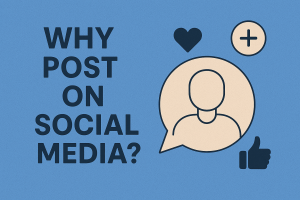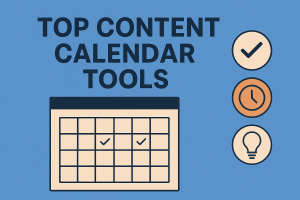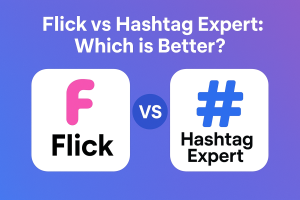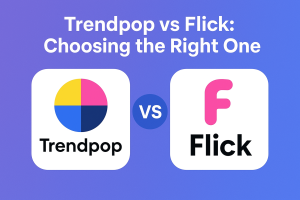Planable vs Buffer: Managing multiple social media accounts efficiently requires tools that streamline collaboration and scheduling. Two popular platforms stand out for their ability to simplify these tasks, offering unique features tailored for modern marketing teams. This article explores how these solutions empower users to create, approve, and publish content seamlessly.
Real-time collaboration is a game-changer for agencies and in-house teams juggling tight deadlines. Both platforms provide calendar previews to visualize content pipelines, reducing errors and ensuring brand consistency. Approval workflows further enhance productivity by centralizing feedback and minimizing revision cycles.
Pricing structures vary between the tools, with one offering flexible plans for growing teams and another prioritizing simplicity in its pricing model. User-friendly interfaces make onboarding smooth, while integrations with major social networks keep all channels manageable from a single dashboard.
This comparison focuses on practical factors like team size compatibility, customization options, and reporting capabilities. We’ll analyze how each platform handles content creation spikes, client reviews, and last-minute edits using real-world scenarios from digital marketing professionals.
Key Takeaways
- Collaboration features differ significantly between platforms
- Calendar visualization tools impact content planning efficiency
- Pricing models cater to different team sizes and budgets
- Both solutions prioritize user experience for marketing teams
- Approval systems vary in customization and automation
Introduction to Social Media Scheduling Platforms
Social media’s role in business growth demands tools that simplify content planning and execution. These platforms help teams organize, schedule, and publish social media posts across networks from one dashboard. By automating repetitive tasks, they free up time for creative strategy and audience interaction.
Effective social media management relies on three pillars: consistent posting, collaborative workflows, and data-driven adjustments. Scheduling tools provide calendar views to map out campaigns weeks in advance. They also offer draft-saving features and Planable vs Buffer version control to keep content organized as teams iterate.
Timing matters when engaging audiences. Platforms with optimal posting algorithms ensure updates reach users when they’re most active. Some solutions even suggest improvements for posts based on historical performance data.
Popular tools in this space balance simplicity with advanced functionality. One platform stands out for its intuitive design and free tier, ideal for solo creators. Another excels at multi-stage approval processes, letting stakeholders review drafts and leave feedback directly on mockups.
Businesses using these systems report 34% faster content production cycles and fewer scheduling errors. As digital landscapes grow more competitive, streamlined social media management becomes crucial for maintaining brand visibility and customer connections.
Understanding the Platforms: Features and Functionality
Modern social media tools must balance intuitive design with powerful capabilities to meet diverse team needs. Let’s explore how leading solutions address core requirements like visual planning and cross-platform support.
Overview of Key Capabilities
One platform shines with its color-coded calendar, letting teams spot gaps in content pipelines at a glance. Users can drag posts between dates or duplicate campaigns for recurring events. Another solution simplifies media handling by connecting directly to design tools, enabling instant uploads from popular storage platforms.
Built-in post editors help craft polished content without switching apps. “Approval workflows reduced our revision time by half,” notes a marketing manager at a mid-sized agency. Real-time commenting keeps feedback organized, while version history prevents accidental overwrites during collaborative edits.
Notable Comparison Points
Analytics dashboards vary significantly between platforms. One offers basic engagement metrics like clicks and shares, while the other provides audience demographic breakdowns and competitor benchmarking. Custom reports can be automated in both systems, though export formats differ.
Third-party Planable vs Buffer connections extend functionality beyond native features. While both support major social networks, integrations with email marketing services Planable vs Buffer and CRM platforms give one tool an edge for sales-focused teams. User permissions also differ – some platforms allow granular access controls for clients or contractors.
“The right integrations turned our content calendar into a central hub for cross-department projects.”
Planable vs Buffer
Choosing the right social media management tool often hinges on how well it aligns with team dynamics and budget constraints. Let’s examine critical differences in team capacity support and operational efficiency between these platforms.
Team size flexibility varies significantly. One solution supports unlimited users across all plans, ideal for agencies managing multiple clients. The other charges per user, which works better for smaller teams. Mid-sized companies often prefer scalable pricing that grows with their needs.
Approval systems reveal another key contrast. Platforms with built-in review workflows let stakeholders comment directly on mockups and approve drafts in-app. “We eliminated endless email chains after switching to in-platform approvals,” shares a social media director. Alternative tools rely on external communication methods, creating version control challenges.
| Feature | Planable | Buffer |
|---|---|---|
| Max Team Members | Unlimited | 10+ (Premium) |
| Approval Workflow | Multi-level in-app | Comment-based + external tools |
| Scheduling Interface | Drag-and-drop calendar | List view + basic calendar |
| Entry-Level Pricing | $13/user/month | $6/user/month |
Visual planning tools also differ. Drag-and-drop calendars help teams rearrange content like puzzle pieces, while list views prioritize chronological organization. Marketing teams handling frequent client revisions often favor the former for its flexibility.
When evaluating costs, consider both per-user fees and hidden expenses like time spent managing external approvals. Platforms offering comprehensive features at higher price points might deliver better long-term value for growing teams.
Content Creation and Scheduling Workflows
Streamlined workflows transform chaotic content planning into organized execution. Marketing teams benefit from tools that merge drafting, editing, and Planable vs Buffer publishing into unified processes. Let’s explore how modern platforms tackle these needs through intuitive design.
Scheduling Processes and Calendar Views
Creating social media content starts with drafting captions and visuals. One platform displays mockups across different networks, showing exactly how posts will appear to audiences. Teams drag content blocks into color-coded calendar slots, aligning with campaign timelines.
Another solution offers a simplified list view with bulk scheduling. Users upload media files, write captions, and select optimal posting times in minutes. “The calendar’s drag feature lets us adjust entire campaigns when priorities shift,” says a content coordinator at a retail brand.
Approval and Content Review Workflows
Multi-stage reviews ensure quality before publishing. Planable vs Buffer Stakeholders leave comments directly on post previews, eliminating confusion about suggested changes. Version history tracks edits, while automated reminders keep approvals on schedule.
Some tools tag team members in feedback threads, creating clear accountability. Others lock finalized posts to prevent accidental edits. These safeguards help maintain brand consistency when managing content across multiple channels simultaneously.
Platforms that combine scheduling with approval workflows reduce bottlenecks. Teams report 40% faster turnaround times when using in-app review systems compared to email-based methods. This efficiency becomes critical during product launches or holiday campaigns requiring precise timing.
Collaboration and Team Management
Effective teamwork drives successful social media campaigns. Platforms with robust collaboration tools help teams coordinate content creation while maintaining version control. Let’s explore how modern solutions balance real-time editing with structured oversight.
Real-Time Collaboration Tools
One platform offers threaded comments directly on post mockups, letting stakeholders suggest edits visually. Users tag colleagues in feedback loops, creating clear action items. “Our approval time dropped 40% after switching to in-app comments,” notes a digital agency lead.
Another solution uses simplified @mentions for basic coordination. While effective for small groups, larger teams may need more granular controls. Side-by-side comparisons show differences in workflow efficiency:
| Feature | Platform A | Platform B |
|---|---|---|
| Comment Threads | Visual post annotations | Text-only replies |
| Edit Tracking | Version history + timestamps | Basic revision logs |
| Live Updates | Instant sync across devices | Manual refresh required |
Internal Communication and Role Permissions
Custom access levels prevent unauthorized changes to scheduled content. Marketing directors can restrict editing rights while allowing client reviews. One system provides seven user roles – from admins to view-only guests – ensuring secure collaboration.
Clear permissions reduce miscommunication during crunch periods. Planable vs Buffer Teams managing 10+ accounts benefit from centralized dashboards showing task ownership. These features prove vital when scaling campaigns across regions or departments.
“Granular roles let our interns contribute drafts without risking accidental publishes.”
Calendar, Interface, and Usability
Visual organization separates effective social tools from cluttered interfaces. One platform’s color-coded calendar turns complex schedules into easy-to-read grids, while another uses minimalist design for distraction-free planning. Both approaches prioritize clarity but cater to different working styles.
Calendar views significantly impact how teams handle media posts. Vibrant interfaces display thumbnails and captions side-by-side, letting users preview content across networks. Simplified dashboards focus on chronological lists – ideal for teams prioritizing speed over visual flair.
- Drag-and-drop editing speeds up last-minute changes
- Custom filters sort content by platform or campaign
- Responsive designs adapt to mobile screens seamlessly
The best tools make scheduled media visible at a glance. One dashboard uses collapsible sections to hide completed posts, reducing clutter. Another highlights upcoming deadlines with color gradients, helping teams spot gaps in their content pipeline.
| Feature | Platform X | Platform Y |
|---|---|---|
| Calendar Type | Interactive grid | Scrollable list |
| Media Previews | Full mockups | Thumbnail icons |
| Customization | Brand color themes | Layout presets |
“Switching to a visual calendar cut our content review time by 30% – we immediately see what’s missing or duplicated.”
Navigation ease directly affects productivity. Platforms with persistent menu bars and quick-search functions help users jump between campaigns. These subtle design choices determine whether a tool becomes a time-saver or another task to manage.
Pricing, Plans, and Value
Budget-conscious teams need transparent pricing models that grow with their social media needs. Platforms approach costs differently – some charge per user, others per account. Understanding these structures helps businesses avoid overspending while maximizing features.
Entry-Level Options versus Enterprise Solutions
One solution starts at $6 monthly per social channel, ideal for solopreneurs managing 2-3 accounts. Its free tier supports basic scheduling but limits team members. Another platform uses per-user pricing from $13/month, offering unlimited clients and advanced workflows for agencies.
| Plan Type | Starter | Enterprise |
|---|---|---|
| Max Users | 1-5 | Unlimited |
| Social Accounts | Up to 10 | 100+ |
| Key Feature | Basic analytics | Custom reporting |
Enterprise plans often include white-label dashboards and priority support. Marketing teams handling 50+ accounts prefer platforms with bulk user discounts. “Planable vs Buffer The scalable pricing let us add interns without budget headaches,” shares an e-commerce manager.
Cost Efficiency and Budget Considerations
Small businesses save most with flat-rate plans covering essential features:
- Unlimited post scheduling
- Basic collaboration tools
- 3-5 social platform connections
Agencies prioritize per-client billing capabilities. One user notes: “We track costs per client effortlessly now.” Free trials help teams test if advanced analytics justify higher tiers.
When scaling, calculate costs for both users and channels. Platforms offering annual billing often provide 15-20% savings versus monthly plans. Regular audits prevent paying for unused features as needs evolve.
Analytics and Reporting Insights
Measuring success in social media demands more than just counting likes – it requires actionable insights that connect posts to business outcomes. Modern platforms offer varying depths of analysis, from surface-level metrics to granular performance breakdowns.
Basic Metrics versus Advanced Reporting
One solution focuses on essential engagement tracking, showing likes, shares, and clicks per post. Users get weekly Planable vs Buffer summaries highlighting top-performing content. Another platform digs deeper with audience demographic filters, revealing age ranges and peak activity times.
Key differences emerge in reporting capabilities:
- Basic dashboards display reach and impression trends
- Advanced systems track conversion paths from social clicks
- Competitor benchmarking tools in premium tiers
| Feature | Essential Analytics | Advanced Reporting |
|---|---|---|
| Data Depth | Last 30 days | Custom date ranges |
| Export Options | PDF summaries | CSV raw data |
| Insight Type | Post-level stats | Campaign comparisons |
Marketing teams use these insights to refine content strategies. “Seeing which posts drive website traffic helps us allocate resources better,” shares a retail brand’s digital lead. Platforms with cross-channel engagement metrics help identify underperforming networks.
“Advanced audience filters revealed our true customer base – we shifted 40% of our content budget based on those insights.”
While basic tools suit small businesses, growing teams need predictive analytics and ROI tracking. The right reporting system turns raw data into Planable vs Buffer strategic roadmaps for social success.
Integration and Third-Party Tools
Modern social strategies thrive when tools connect effortlessly. Robust integration capabilities turn standalone platforms into powerhouses that handle design, storage, and analytics through partner apps. Teams save hours by eliminating manual uploads and data transfers between systems.
Popular platforms sync with creative software like Canva for instant image editing. Cloud storage connections let users pull assets directly from Dropbox or Google Drive into scheduled posts. One marketing manager notes: “Our design team updates graphics in real-time – changes automatically reflect in the media management tool.”
- Content creation: Direct access to stock photo libraries
- Workflow automation: Zapier triggers for approval alerts
- Asset organization: Centralized brand kits with approved logos
APIs expand functionality for tech-savvy teams. Custom integrations with CRM systems enable social listening data to influence sales outreach. Another platform’s Slack bot sends scheduling reminders, keeping campaigns on track without leaving communication channels.
| Integration Type | Common Use Cases |
|---|---|
| Design Tools | Live collaboration on post visuals |
| Cloud Storage | Instant media file retrieval |
| Analytics Platforms | Cross-channel performance tracking |
“Connecting our media management tool to Slack cut response time to client feedback by 65%.”
These connections create ecosystems where content flows smoothly from creation to publication. Teams using integrated software stacks report 28% faster campaign launches compared to manual processes.
Platform Compatibility and Supported Networks
A tool’s network reach determines how effectively teams maintain their social media presence across digital landscapes. Leading solutions support major social media platforms like Facebook, Instagram, and LinkedIn, while also adapting to emerging channels. This compatibility ensures brands engage audiences wherever they interact online.
| Platform | Core Networks Supported |
|---|---|
| Tool A | Facebook, Instagram, X (Twitter), LinkedIn, TikTok, Pinterest |
| Tool B | Instagram, LinkedIn, X (Twitter), Facebook, YouTube, Google My Business |
Centralized dashboards simplify managing multiple social media accounts. Users toggle between profiles without logging out, saving hours weekly. One marketing director notes: “Posting to 8 channels from one screen cut our scheduling time by half.”
Cross-platform consistency matters more than ever. Tools supporting niche networks help brands connect with specialized audiences. A bakery chain increased engagement 120% by using a platform with TikTok integration – their videos reached younger demographics effectively.
“LinkedIn support transformed how we share thought leadership content alongside casual Instagram posts.”
Teams managing diverse social media channels need solutions that grow with platform trends. Compatibility with new networks ensures brands remain visible as user preferences evolve. Regular updates keep tools aligned with algorithm changes and feature rollouts.
Customer Feedback and Real-World Use Cases
Customer experiences reveal practical truths about social media tools. Marketing agencies praise platforms that simplify content creation while handling multiple social media accounts. One team reduced scheduling errors by 60% after adopting collaborative workflows, noting: “We now manage campaigns for 20+ clients without missing deadlines.”
E-commerce brands highlight time savings through centralized approvals. A beauty retailer’s social lead shares: “Our approval cycles shortened from 3 days to 4 hours.” Teams handling seasonal campaigns value tools that let them bulk-schedule posts across networks, maintaining consistency during high-volume periods.
“The calendar view helped us spot overlapping promotions before they went live – saved our holiday campaign.”
Measurable impacts emerge across industries:
- Tech startups report 50% faster content creation using shared draft libraries
- Nonprofits track 2x engagement growth after streamlining multiple social media posts
- Restaurant chains reduced scheduling time by 75% with drag-and-drop calendars
These stories underscore how efficient tools transform scattered efforts into cohesive strategies. Whether managing global brands or local businesses, teams thrive when platforms align with their workflow realities.
Comparing Additional Social Media Management Tools
Expanding your toolkit options helps teams find solutions tailored to their unique workflow demands. While popular platforms excel in core features, alternatives offer specialized strengths worth exploring for growing organizations.
Hootsuite and Sprout Social as Alternatives
Hootsuite shines with granular team controls, offering tiered access permissions across 35+ social profiles. Its monitoring dashboard tracks brand mentions alongside scheduled social media content, ideal for reputation management. Agencies appreciate bulk scheduling for 500+ posts and custom report templates.
Sprout Social merges publishing with CRM capabilities. Built-in sentiment analysis helps teams gauge audience reactions to campaigns. “The contact history feature transformed how we personalize replies,” shares a retail marketing lead. Unified inboxes streamline customer interactions across networks.
| Feature | Hootsuite | Sprout Social |
|---|---|---|
| User Roles | 7 permission levels | 5 customizable tiers |
| Content Tools | Bulk composer | AI-powered captions |
| Unique Strength | Social listening | CRM integration |
Smaller teams often prefer Sprout’s intuitive analytics, while enterprises leverage Hootsuite’s scalability. Both alternatives handle social media content approvals faster than email-based systems used by Buffer. Unlike Planable’s visual calendar, they prioritize data-driven decision making through advanced metrics.
When choosing, consider response time needs and customer interaction volume. Platforms with built-in CRM features reduce context-switching for service-oriented teams, while analytics-focused tools better suit data-heavy strategies.
Making the Right Choice for Your Business
Selecting a social media management solution requires balancing immediate needs with long-term goals. Teams should prioritize tools that adapt to evolving workflows while maintaining core functionality. Let’s explore key decision factors and growth strategies.
Team Dynamics and Operational Fit
Evaluate how platforms handle user roles and content volume. Small teams benefit from flat-rate pricing, while agencies need per-client billing options. Tools with unlimited seats prevent bottlenecks when expanding creative teams.
| Feature | Scalable Option | Fixed Option |
|---|---|---|
| Max Users | Unlimited | 10 seats |
| Approval Layers | Custom workflows | Basic 2-step |
| Integrations | API + Zapier | Native apps only |
Building Adaptable Strategies
Choose platforms offering automated reporting and cross-channel analytics. A Midwest tech startup scaled campaigns 300% using tools with bulk scheduling and client-specific dashboards. Regular feedback loops ensure tools meet changing needs.
“Monthly team retrospectives helped us optimize our platform setup as our content output tripled.”
Prioritize solutions with sandbox environments for testing new features. Teams using feedback-driven updates report 25% higher long-term satisfaction. Always trial tools during peak seasons to assess performance under pressure.
Conclusion
Selecting the ideal social media management platform depends on understanding your team’s operational rhythms and content demands. Throughout this comparison, we’ve explored how different solutions excel in distinct areas – from collaboration-focused workflows to budget-conscious pricing models.
The right choice hinges on aligning platform strengths with your content creation process. Larger teams often prioritize unlimited user access and multi-stage approvals, while smaller groups value straightforward scheduling interfaces. Consider how each tool’s calendar visualization and reporting capabilities match your campaign management style.
When reviewing options, focus on how features integrate with existing workflows. Does the platform simplify feedback loops or complicate them? Can pricing scale alongside your social strategy? These factors determine long-term efficiency gains.
Ultimately, the best way to evaluate social tools is through hands-on testing. Take advantage of free trials to experience how each system supports your team’s unique processes. What works for an agency managing 50 accounts might overwhelm a startup handling three channels – let your specific needs guide the decision.






